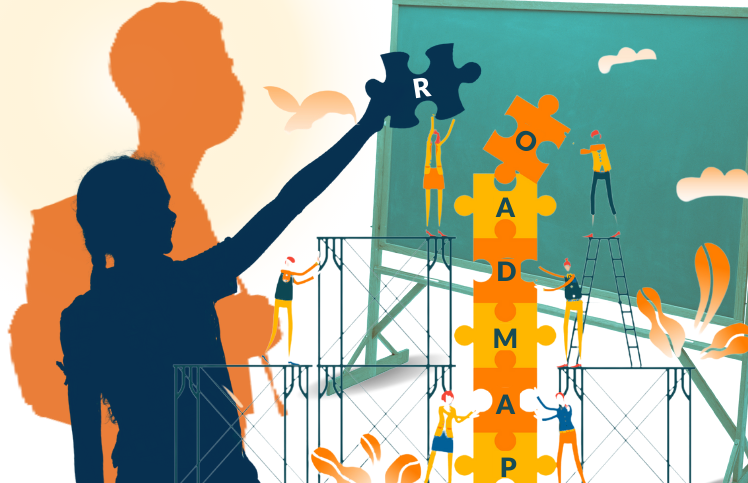by Gary Kaplan
Helping Teachers Implement Acceleration
We all know that the coming year will be the most challenging in memory because of the effects of the covid shutdown. Learning loss, or unfinished learning, has disrupted attainment of grade-level skills, aggravated achievement gaps and delayed college plans. Commissioner Riley has said that the pandemic has made the challenge of serving students with varied academic needs “significantly more pronounced and widespread.”
To support administrators and teachers in meeting this unprecedented challenge, DESE has issued the Acceleration Roadmap, a detailed guide to the implementation of the philosophy of “learning acceleration.” This philosophy is not merely a theory; it presents a pedagogical praxis that “strategically prepares students for success in the present—this week, on this content.” The teachers’ Roadmap contains 27 pages of “specific actions” plus many links to put the theory into practice.
Grade level is where everyone wants to be, but what about skill gaps that impede grade-level learning? “Past concepts and skills are taught, but always in the context of grade-level learning…. If a student hasn’t mastered the earlier skills that are required to complete a grade-appropriate assignment, the student receives ‘just-in-time support’… just the right amount of help to move forward, right when they need that help, through scaffolds and coordinated interventions.”
The Roadmap makes a strong distinction between ‘just-in-time’ support and traditional remediation. Whereas remediation “is often based on the misconception that students … must first go back and master everything they missed” which can take months, accelerated learning “asserts that every student is capable of accessing grade-appropriate work with the right supports…” in the form of just-in-time scaffolding strategies.
The basic outline is clear: focus on grade-level work and provide timely just-in-time support as needed. How does a teacher know when and where such support is needed? The Roadmap lays out a methodology.
In this post, we will discuss two of the three Action Steps set forth in the Roadmap: Monitor Understanding and Strong Instruction. (The third Step, Sense of Belonging, is not directly academic.) We will focus on Phase 2, Launch, which concerns the opening of school in September and October.
In the plan, teachers are advised to use curriculum-embedded assessments in the first unit of instruction to monitor student understanding of grade-level content. The instructional materials should have been pre-evaluated to ensure that they are high-quality and grade-appropriate. Using the assessment data, teachers are to identify specific areas where students need just-in-time interventions and plan scaffolding strategies for daily or weekly lessons according to students’ needs. It is up to the teacher to find high-quality, grade-appropriate curricular and instructional materials and to provide differentiated just-in-time interventions to address instructional gaps.
The system envisioned in these priorities—assess student skills and provide appropriate instruction according to individual student needs—is exactly what is needed. But the burden on teachers is heavy. The JFYNet online academic support program can lighten that burden.
JFYNet has been supporting teachers with grade-level content and assessment since 2000. Our content has changed over the years as educational software has advanced. We have developed a deep bank of methods and resources to address the range of learning issues that face students and teachers. We are well prepared to help teachers meet the challenges of the coming year.
We summarize our methodology in the acronym AIMS: Assess, Instruct, Measure, Support.
- We assess each student’s skills using embedded measurement tools or existing school data to diagnose learning needs.
- We provide teachers with high-quality instructional software aligned to grade-level standards, district pacing guides, course curricula, or benchmark tests.
- We measure students’ understanding by monitoring individual progress through the curriculum as recorded in the embedded data system. Close attention to student data enables timely intervention.
- We support teachers onsite when possible and virtually via videoconferencing, phone, email and our website. We use real-time student data to make instructional adjustments that keep students on track. Continuous professional development and support for teachers builds skill and confidence. This structured and supported use of instructional resources maximizes the effectiveness of teaching and learning, and supports Acceleration.
A JFYNet Learning Specialist is assigned to each school. He or she connects with teachers on a regularly scheduled basis to coach teachers in the practice of online learning and the analysis of student performance data to individualize instruction and provide just-in-time scaffolding. This on-the-job professional development is done via email, text, phone, and videoconference. Student performance reports are generated frequently. Instructional recommendations for teachers are derived from these reports. This real-time data feedback loop constitutes an integrated formative assessment, a critical tool for guiding and differentiating instruction for implementing accelerated learning.
This post has discussed priorities 2 and 3, assessment and instruction. In the next post, we will focus on the Teacher Instructional Cycle (or Learning Acceleration Instructional Cycle) which incorporates and systematizes all the processes of accelerated learning.
Gary Kaplan is the executive director of JFYNetWorks
Other posts authored by Gary can be found here.
HOW ARE WE DOING? In our pursuit to serve up content that matters to you, we ask that you take a couple of minutes to let us know how we’re doing? Please click here to be navigated to our JFYNet Satisfaction Survey. Thank you!





